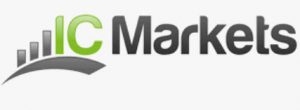Understanding Leverage in CFD Trading
Leverage is a fundamental element in Contract for Difference (CFD) trading that enables investors to engage in larger trades than their available capital would typically allow. Through a deep understanding of leverage, traders can effectively manage their risks and devise optimized investment strategies that align with their financial goals.
What is Leverage?
Leverage, in the context of CFD trading, is essentially the practice of using borrowed funds to expand one’s trading capacity beyond the actual cash reserves. This process allows traders to employ a modest amount of capital, identified as the margin, to control more substantial positions. The primary benefit of leverage lies in its potential to significantly amplify returns. However, it is vital to recognize that while leverage can boost profits, it equally has the potential to increase losses.
How Leverage Works
In CFD trading, a trader is required to deposit merely a fraction of the total value of the intended position, referred to as the margin requirement. For instance, if a trader aims to trade a CFD valued at $100,000 with a margin requirement of 5%, they would necessitate only a $5,000 deposit. The leverage extended by the broker covers the remainder.
Leverage is expressed in ratios. A leverage ratio of 20:1 suggests that a trader control a $100,000 position with just $5,000. This dynamic can potentially expand profits as well as losses.
Leverage Mechanism Dynamics
The mechanism of leverage in CFD trading is both a tool and a risk. The ratio implies the level of exposure a trader has in the market compared to the actual investment. A higher leverage ratio equates to higher exposure to market volatility. Consequently, leverage becomes a double-edged sword—while it intensifies the possibility for profit, it equally increases the risk and the speed at which losses can compound.
For new traders, understanding the full implications of leverage involves acknowledging its capacity to either bolster their financial pursuits or challenge them with unexpected financial strains.
Risks Associated with Leverage
While the allure of magnified gains through leverage is undeniable, it accompanies substantial risks. Traders should carefully consider several key aspects:
Increased Losses: The same mechanism that can double profits can also double losses. A minor unfavorable market movement has the potential to result in significant financial detriment.
Margin Calls: In cases where the market trend opposes the trader’s position, there may be a demand for additional funds to sustain the trader’s existing position. This situation is referred to as a margin call. Margin calls serve as reminders for traders about the essential need for having adequate reserves to safeguard positions during adverse market conditions.
Overtrading: The seductive promise of substantial potential profits can result in excessive trading. Overtrading not only yields higher transaction costs but also amplifies exposure to potential market risks. The temptation to maximize every possible marginal gain often leads to unnecessary financial exposure.
The Psychological Aspect of Leverage
Understanding the psychological impact of leverage on trading behavior adds another layer of complexity. Traders might experience pressure or overconfidence due to the increased exposure provided by leverage. This psychological burden can lead to impulsive decisions not aligned with initially planned trading strategies.
Insufficient planning and an incomplete understanding of leverage consequences can turn leverage from a beneficial tool into a detrimental one. As such, maintaining discipline and ensuring trading actions are not influenced by the emotional highs or lows that leverage can introduce is essential.
Managing Leverage Responsibly
The sound management of leverage necessitates thorough and careful strategic approaches. Here are a few considerations:
Start with Lower Leverage: It is advisable for novices to commence with lower levels of leverage which align with their familiarity and comfort with market dynamics. Many brokers provide adjustable leverage options, enabling traders to begin with more conservative ratios.
Implement Risk Management Tools: Utilizing mechanisms such as stop-loss orders and take-profit targets is instrumental in safeguarding capital and securing potential profits. Employing such automated methodologies minimizes the influence of emotional trading choices and actively aids in risk management.
Stay Informed: Keeping abreast of current market conditions is pivotal. Understanding the implications of geopolitical events, economic indicators, and other influencing variables is crucial, as these elements can substantially affect CFD pricing. Traders who remain informed can adapt strategies to mitigate risk effectively.
Continuous Education: Trading markets are dynamic, and constant learning is fundamental. Engaging with educational resources, such as broker platforms and financial education blogs, can deepen knowledge and ensure that traders remain updated on the ongoing changes in market conditions and risk management strategies.
Conclusion
To navigate the challenges posed by the market wisely, traders must adopt a cautious approach by understanding the nuances of leverage in CFD trading. Responsible leverage management involves thorough comprehension, judicious application, and consistent attention to evolving market conditions and strategies. Adequate preparation and cautious leverage application can position traders to effectively capitalize on their CFD trading endeavors while minimizing potential risks.
This article was last updated on: April 10, 2025







